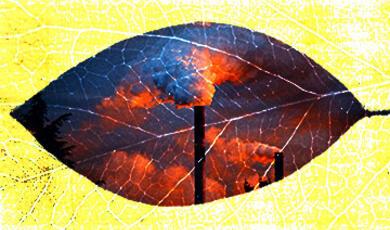Bug World: Sex, Violence and a Cast of Billions
Share
- Details
- Text
- Audio
- Downloads
- Extra Reading
Insects are the most abundant and enduring multi-cellular life form ever to have evolved. They are fast breeding, highly evolvable and, thanks to their body-plan, are future-proofed like no other animal. There are 40 tonnes of insects for every human being alive and they account for well over half of all known species. They are an essential component of global food chains and without them as pollinators, predators and recyclers, the world would be a very different place. As model organisms in research, insects have greatly helped our understanding of genetics, physiology and behaviour. But they have a dark side - they have changed the short course of human history by killing hundreds of millions of people and destroying their crops.
Download Text
13 September 2016
Bug World:
Sex, Violence and a Cast of Billions
Professor George McGavin
As the dominant multicellular life form on the planet, the ecological impact of insects is colossal. To really understand insects and what they do, you must enter their world - a world of sex and violence with a cast of billions.
The Earth formed from gas and debris around 4,600 million years ago (mya). The first traces of life appear as fossils of blue green algae around 3600 - 3400 mya yet for more than 2 billion years, nothing more complicated than bacteria, algae and minute, unicellular planktonic organisms existed. Then evolution went into overdrive. Known popularly as biology’s “big bang" - the time around the beginning of the Cambrian period (543 mya) saw the “sudden” appearance in the fossil record of an incredible assemblage of multicellular animals some of which were the ancestors of all species on Earth today. Chief among these animals were the arthropods. The segmented, worm-like forebears of these creatures had certainly arisen by the late Precambrian, for the early arthropods had already evolved into a range of clearly recognisable groups with distinct body plans by the early to mid-Cambrian.
The Evolution of Insects
The very first terrestrial arthropods did not suddenly emerge from the sea to live on the land but probably made a gradual progression from first living around the fringes of permanently wet coastal areas in habitats such as shoreline algal mats. Their progress might have accompanied the spread of algae and other species as they slowly colonised the land, perhaps initially as scavengers. A common view has been that the invasion of the land by early arthropods took place after the appearance of land plants between the late Ordovician and the mid-Silurian. We know very little about what sorts of animals made the transition but a recent important finding of fossil material from Upper Silurian rocks in Shropshire has pushed the appearance of arthropods on land earlier in time. The material found includes the remains of two species of centipede and a sort of mite. There is ample morphological evidence that these animals were truly terrestrial but what is interesting is that the majority of the animals found were predatory. This indicates very strongly that there must have been other animals present, occupying lower trophic levels, detritivores and early herbivorous arthropods. To have these food chains in place by the late Silurian implies that the early arthropods must have emerged from the sea in early Silurian times.
The first definite appearance of insects occurs early in the Devonian (~400 may) and after that, several major events take place. The first is the sudden appearance of wings before the end of the Devonian and certainly by the beginning of the Carboniferous. By the end of the Carboniferous and before the extremes of climate experienced in the Permian really told hold, the insects have evolved complete metamorphosis. The stages by which this took place will probably never turn up as fossils but the evolution of the pupal stage was a major innovation, for it allowed insects to survive in an increasingly seasonal climate. The pupa also made it possible for larval stages to utilise different food resources and microhabitats from that of the adults and led ultimately to the situation where larvae are just efficient eating machines and the adults are solely responsible for dispersal and reproduction.
The last major event in the evolution of insects occurred in the Cretaceous period (146 - 65 million years ago). Although insects and plants have relationships dating back to the Carboniferous (350 million years ago), the rise and radiation of the flowering plants (Angiospermae) led to a huge increase in the number of species and the appearance in the fossil record of taxa such as modern-day termites, bees and butterflies. Insects such as beetles, pre-adapted to feeding on fungi, spores and cycad or conifer pollen would have been suitably pre-adapted to utilise the new resource represented by the early flowering plants.
Our own fossil history in comparison is very short. A mere 3.6 million years ago in Laetoli, Tanzania, two early humans walked through wet volcanic ash. When the nearby volcano erupted again, subsequent layers of ash covered and preserved the oldest known footprints of early humans.
A little over 1.5 million species of living organism have been scientifically described to date. The vast majority (66%) are arthropods such as crustaceans, arachnids, myriapods and insects. Insects represent 75% of all animals and one insect order, the beetles (Coleoptera) is extremely species rich. From attempts over thirty years ago to estimate the number of extant species to the present day we are still only have a rough idea of how many species live alongside us. Estimates range from as few as 5 million to perhaps as many as 10 or 12 million species. The task of enumerating them may become a lot easier as the loss and degradation of natural habitats, especially the forests of the humid tropics, continues unabated. I am now pretty certain that the majority of insect species will become extinct without us knowing they even existed.
There are an estimated ten million, million, million (10,000,000,000,000,000,000 or 1 x 1019 ) individual insects on the surface of the Earth at anytime - that’s roughly 40 tonnes of insects for every man woman and child. The British polymath J. B. S. Haldane, when asked what could be inferred of the creator by looking at the works of creation, replied The creator, if he exists, has an inordinate fondness for beetles.
What then has made insects so spectacularly successful? The very high insect diversity on Earth today is the result of a combination of high rates of speciation and the fact that many insects show relatively low rates of extinction. Most insects species survive, essentially unchanged for 2 million years or so but a few species, found in Baltic amber 35 million years old, are morphologically identical to living species. A number of key factors led to the success of the insects.
Cuticle
Chitin, the main component of insect exoskeletons (cuticle), is a long-chain polymer of a N-acetylglucosamine, a derivative of glucose. The common analogy of a suit of armour for the protective and waterproof outer covering of insects is as much of a hindrance to understanding as a help. Just like armour, the cuticle provides mechanical protection for the body and its appendages. Unlike man-made armour the cuticle is, to a large degree, capable of self-repair. Mechanical damage to larval cuticle such as a small tear or puncture is quickly sealed. If penetrated, the basement membrane of the integument closes up and new epidermal cells are produced on either side. Full repair by the production of a complete new cuticle takes place at the next moult. The ability of some species such as stick insects to regenerate legs after amputation or autotomy is well known.
The cuticle is not simply protective, it also serves as can anchor point for muscles. Muscles are attached to the inside and in places the cuticle is extended to form apodemes, the arthropod equivalent of tendons. The cuticle also bristles with chemo- and mechano-sensory devices of all kinds and has built-in strain gauges to signal loads and tensions within its structure.
The outward appearances of insects are much more variable than the insides. Most insects have the same kinds of internal organs, even though they may differ in size by three orders of magnitude. But the cuticle has been moulded throughout the course of evolution to provide all kinds of devices for running, burrowing, jumping, flying, swimming, catching food and so on. Cuticle may be cryptically or brightly coloured, it may smooth, spiny or hairy. It can be tough enough to cut through metals and hardwood or so delicate that gases will diffuse through its surface.
An Efficient Nervous System with a Blood-Brain Barrier
Most animals have similar kinds of internal systems: a digestive system, a reproductive system, a circulatory system and so on. Of primary importance, the nervous system integrates information about the environment outside the body and the physiological conditions inside. The internal organs of insects are constantly immersed in haemolymph whose composition varies with food intake and environmental conditions but to work properly, the nervous system needs an environment which is chemically stable within a narrow tolerance band. Other tissues can cope quite well with fluctuations in osmotic pressure and ionic concentrations and normal homeostatic processes are able to maintain conditions within acceptable limits. A conspicuous feature of the central nervous system of insects and other terrestrial arthropods (and vertebrates) is the presence of a clearly defined blood-brain barrier. The nervous system needs a private pool, not communal bathing.
The brain, ganglia, ventral nerve cords and the major peripheral nerves of insects are sheathed by a supportive, corset-like layer of connective tissue called the neural lamella (or neurolemma) inside which the perineurium, made up of glial cells, acts as the blood-brain barrier. The most important sort of junction between glial cells in the perineurium are tight junctions that prevent ions and molecules in the haemolymph from diffusing in and out of the CNS. Because of these tight junctions, the fluid in the tiny extra-cellular “private pool” immediately surrounding the CNS is ionically isolated from the rest of the haemolymph.
Imagine the modern world without electrical insulation. Very careful routing of bare wires would be needed to avoid the continual shorting-out of circuits. If it were not for the insulating properties of the glial cells, electrical signals passing through the million or so neurons that make up an insect’s nervous system would be grossly degraded.
Size
How big you are is of great importance as it determines what effects the environment will have on you. To really understand the insect’s world you need to imagine how the physical environment affects small creatures. Take falling for example. On Earth, the acceleration due to gravity is a constant but its effects vary according to how big the falling object is. Shed pollen grains and similarly small objects, for example, might be blown around for weeks before they reached the ground. No matter how high you dropped an insect from it would not be damaged. J. B. S. Haldane takes up the story, You can drop a mouse down a thousand foot mine shaft and, on arriving at the bottom, it gets a slight shock and walks way. A rat is killed, a man is broken and a horse splashes. It’s all to do with the ratio of surface area to volume. Area is proportional to the square of the length (12), whereas volume is proportional to the cube of the length (l3). Because of drag forces, the terminal velocity achieved by falling objects is proportional to their frontal surface area-to-mass ratio. Thus a 1 kg lead ball will attain a much higher terminal velocity that a 1 kg lead sheet and a 1 cm diameter stone will attain a higher terminal velocity than a 1 cm diameter sponge. For most organisms however the density of the tissues is much the same, and so volume is a good measure of mass. A petit pois has a very much smaller volume (and therefore mass) in relation to its greater surface area than a ripe water melon, which has a large volume (and therefore relatively greater mass) in relation to its small surface area. If you are still not convinced, ask yourself which you would rather drop on your kitchen floor. More massive objects have greater momentum or put simply, the bigger they come the harder they fall.
But insects have been larger than they are today. In the Carboniferous period the vast swamp forests were growing and the level of atmospheric oxygen was much higher than it is now and this would have allowed insects, whose tracheal system relies on diffusion, to attain larger sizes. Many species at this time were large and some had wingspans of nearly one metre. Oxygen levels fell at the end of the Permian favouring smaller species.
It has also been suggested that large size evolved as a defensive strategy against predators such as proto-dragonflies. They, in turn, got bigger and the process continued until it was halted, either because they were no longer mechanically viable or, more likely, because of the appearance and rise of vertebrate predators, such as reptiles, who ate them. From then on insects got smaller and smaller to avoid predation and were thus able to radiate into all the available empty niches.
Small animals are also relatively more powerful than large ones. The cross-sectional area of insect muscles is relatively large compared to the mass they are supporting. We are able to carry a load roughly equal to our body weight whereas the load carrying ability of an ant is many times its own body weight. Earwigs are able to move more than fifty times their own weight. A beetle hanging on to a leaf in a gale may resist a force ten or more times greater than its mass because the adhesive structures on its feet have a relatively huge surface area compared to the rest of the body.
What other consequences are there to being small? The world is a much finer-grained environment to small animals and offers a lot more places to live. Insects have simply evolved to occupy many more ecological niches than larger organisms.
Flight
The power of flight, another major chapter in the success story of insects, would never have been possible without lightweight, rigid cuticle. While there are arguments about exactly what sort of arthropod first walked over dry land, there is no doubt that insects were the first animals to take to the air. Insects evolved wings in the Carboniferous period around 300 million years and today only a minute percentage (0.06%) of the world’s extant insect species (Bristletails and Silverfish) are primitively wingless. Insects with developed wings appear relatively suddenly in the fossil record and, as there are no good fossils that show intermediate stages, there is a great deal of speculation as to how they might have evolved. Insects are very different from other flying creatures like birds and bats which evolved wings from already existing legs and one of the main questions, and the source of much controversy is what the first proto-wings were used for.
Flight certainly allowed insects to disperse, colonise new habitats and to escape from their enemies and the vagaries of the natural environment. Which of these might have been of primary significance in the evolution of wings is a matter of debate but predator avoidance is an excellent candidate as it is clear that life in the Palaeozoic was dangerous due to the numbers of predators. It is not hard to see how being airborne for longer and /or being further away from danger would be a major selective advantage.
Flying is a key adaptation of insects but as insects get small the faster they have to flap their wings to fly. But there are limits to the rate at which muscles can contract to bring about wing movement. The limits are not set by the muscles’ ability to contract but by the inability of motor neurones to fire above a certain rate. In large insects with long wings the flight muscle can be attached directly to the wing bases and speed of firing the motor neurones is sufficient to flap the wings at a suitable speed. The rhythm produced by the “flight motor” is termed neurogenic. Smaller insects have smaller wings and the frequency at which they need to beat is far above the speed at which motor neurones can fire. This problem has been solved in two ways. Firstly, indirect flight muscles are attached to a highly elastic box-like thorax. Distortion of the thorax and the way in which the wings are joined and articulated to the thorax generate the up and down stroke as well as the angle of attack. Secondly, the flight muscles are asynchronous and react rapidly to being stretched by contracting. The net result is that a high wing beat frequency can be produced without the need for a similar firing rate in the flight muscle motor neurones. The rhythm produced by this type of flight motor is termed myogenic.
There is still much to discover about insect flight and what we find may be of use is designing small flying machines. New techniques, using synchrotron radiation, now allow us to look inside the thorax of a live fly in flight. (See the work of Professor Graham K. Taylor https://flight.zoo.ox.ac.uk).
A major reason why beetles are the most successful and numerous of all insects is because the front wings have been become protective wing covers or elytra. This adaptation allowed beetles to go where no insect had gone before and still retain that all important power of flight
Fast breeders
The sexual habits of many insects are truly fascinating but the key element is that many insects have very high reproductive rates. This, coupled with typically short generation times, enable them to evolve faster and adjust to environmental changes much more rapidly than slower breeding animals. A pair of fruit flies could, in theory, produce enough offspring in one year to make a ball with a diameter of 93 million miles. Consider a European folk tale about an old man who helped a vain and unpopular King. The King had the man brought to court and told him that he could have anything he wanted as a reward. The old man asked for a chess board. The King naturally agreed but, as he had wanted to show off his great wealth, demanded that the man asked for something else more valuable. The old man then asked for a one grain of wheat to be put on the first square of the chess board, two grains on the second square and four grains of the third square and so on until the sixty-fourth square. Still not very pleased, the King agreed. It was not until they got to last few squares that the King realised the trouble he was in. On the 64th square would rest more than 9 x 1018 grains — probably more than has been cultivated in the six thousand years of human history.
So that’s what makes them successful but why are insects so important? Firstly they provide essential ecosystem services. They are major pollinators, predators, recyclers and they are the main source food for most animal species.
The contribution to ecosystem function made by insects is immense and far greater than that of vertebrate species. In tropical forests 12-15% of the total leaf area is eaten by insects as compared with only 2-3% lost to vertebrate herbivores. Termites remove more plant material from the African savannahs than all the teeming herds of wildebeest and other ungulates put together. In many habitats, ants are the major carnivores, consuming more animal tissue per annum than all the other carnivores put together.
Insects are also major parasites, controlling the populations of many other species. That there were so many parasites caused Darwin to doubt the existence of a God.
There seems to me too much misery in the world. I cannot persuade myself that a beneficent and omnipotent God would have designedly created the Ichneumonidae with the express intention of their feeding within the living bodies of caterpillars, or that a cat should play with mice...
Insects are the principal food source for many other animals. Virtually all birds and a large number of other vertebrates feed on them. An average brood of great tit chicks will consume around 120,000 caterpillars while they are in the nest and a single swallow chick may consume upwards of 200,000 bugs, flies and beetles before it fledges.
Pollination is perhaps one of the most essential symbioses ever to have evolved. This plant-insect version of ‘I’ll scratch your back if you scratch mine’ has been around for 100 million years and it has given the world a rich diversity, and not just of flowering plants. Twenty-thousand species of bee are responsible for the continued survival of the angiosperms, which includes a very long list of fruit and vegetables from pumpkins, plums and peas to cherries, cucumbers and cocoa.
In research insects are excellent models for studies in physiology, ecology, genetics and behaviour. For example Drosophila has a long history as a model for genetic study -- research began on the fruit fly almost one hundred years ago when Thomas Morgan discovered a mutant fly with white eyes. Research based on this observation resulted in the discovery of chromosomes and won Morgan the Nobel Prize in 1933. Since then Drosophila research has contributed many times to developmental biology and biochemistry. A recent transgenic fly, for example, is proving invaluable in the study of the pathology of the complex human disease, Parkinson's disease.
But insects have a dark side as they can be pests and disease vectors. One-sixth of all crops grown worldwide are lost to herbivorous insects and the plant diseases they transmit. About one in six human beings alive today is affected by an insect-borne illness such as plague, sleeping sickness, river blindness, yellow fever, filariasis and leishmaniasis. About 40% of the world’s population is at risk of malaria. More than 500 million people become severely ill and more than one million die from this disease every year.
Some insects have ever changed the course of history. In 1347 a great plague swept over Europe bringing hysteria and death. At least one-third of the population died. The causative agent was a bacterium, Yersinia pestis, carried in the gut of a flea. The Black Death brought about as series of religious, social and economic upheavals, which had far-reaching effects on the course of European history. And in the history of human warfare, epidemic typhus carried by body lice killed more soldiers than ever died in combat.
Without insects performing essential ecosystems services, the Earth would be a very different place and most terrestrial vertebrates that depend on them directly as food would become extinct. The loss of bees alone might cause the extinction of a quarter of all life on Earth. A total loss of insects would see the human population plummet to perhaps a few hundred thousand individuals subsisting mainly on cereals.
Today we are beginning to tease apart the constituent parts of atoms and see almost back as far as the start of the universe. We are spending huge sums of money finding out about the infinitesimally small and the astronomically large. What we do not seem to be doing is looking after the life support system that keeps us all alive and there is a big problem looming, the first effects of which we are already feeling. Almost every study that has been done to date points to a steady decline in insect species richness and abundance. The loss of natural habitat and the prodigious amounts of pesticides used in agriculture are taking their toll. The decreases seen in well-studied insect groups such as bees and butterflies are surely taking place in many other groups. The question is - at what point does the web of life become so frayed that it starts to disintegrate? We may find out sooner rather than later. It is thought that the world’s tropical forests hold more than half of all extant species. If these complex habitats, are being felled and degraded at even the slowest rate that has been suggested, it will still only be a matter of a few hundred years before they are lost. It is therefore an inescapable conclusion that our planet could lose more than half of all living species in the time is takes for an acorn to become a veteran oak tree. Should we be worried? Well, it all depends on your point of view. Ninety-nine percent of all species that have ever lived on Earth are extinct and it was the occurrence of numerous extinction events that paved the way for the appearance of those creatures that led to human beings. The difference is that now we know enough to do something that might just prolong our own survival.
Imagine if we ever have to leave the Earth and take with us a number of species to provide food, raw materials and recycling services. Humans did try this experiment in Arizona with Biosphere 2 nearly 30 years ago. A large sealed habitat was built for eight people that would need no input save sunlight. Things did not go very well but lessons were learned. Perhaps the most important lesson is that we have a pretty good home right here on our planet - if only we’d take a little more care of it. A planet fit for insects will be just fine for everything else. There may come a day when humans venture far enough into space to visit other planets on which life has developed. Recently the closest candidate for this has been identified. Proxima b is a planet in the constellation of Centaurus. It orbits the red dwarf star Proxima Centauri, in what is known as the habitable zone where water can exist. It may be the closest exoplanet to our Solar System but it’s still 25 trillion miles from Earth. If we do ever reach it and there are multicellular organisms present, I’m going to bet they will look a lot like insects.
Further Reading
Brock, P. D. (2014) A Comprehensive Guide to Insects of Britain and Ireland. Pisces Publications.
Chapman, R. F. (2013) The Insects - structure and function. 5th Edn. Edited by S. J. Simpson and A. E. Douglas. CUP.
McGavin, G. C. (2001) Essential Entomology: an order-by-order introduction. OUP.
© Professor George McGavin, 2016
This event was on Tue, 13 Sep 2016
Support Gresham
Gresham College has offered an outstanding education to the public free of charge for over 400 years. Today, Gresham College plays an important role in fostering a love of learning and a greater understanding of ourselves and the world around us. Your donation will help to widen our reach and to broaden our audience, allowing more people to benefit from a high-quality education from some of the brightest minds.


 Login
Login







